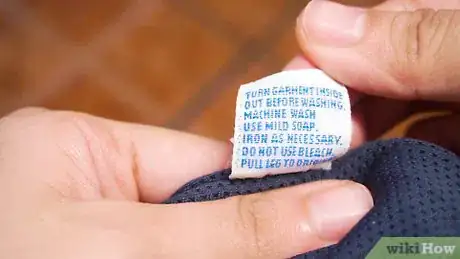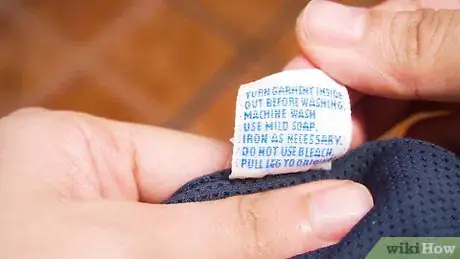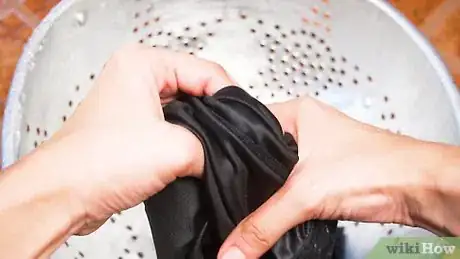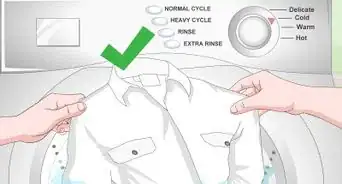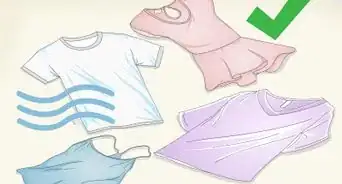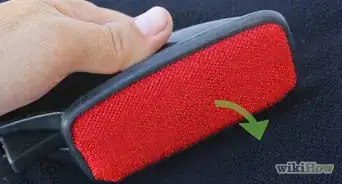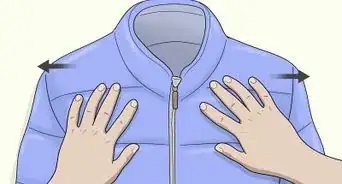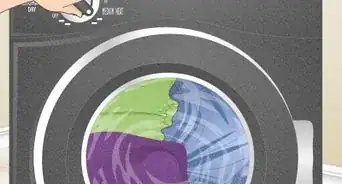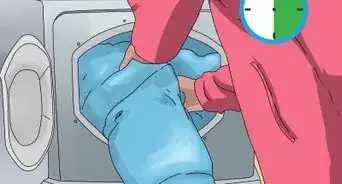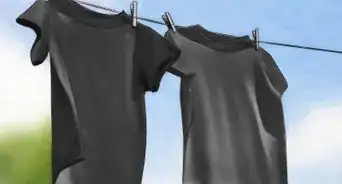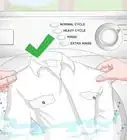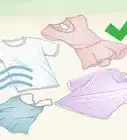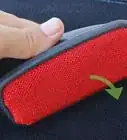This article was co-authored by Jonathan Frank, MD. Dr. Jonathan Frank is an Orthopedic Surgeon based in Beverly Hills, California, specializing in sports medicine and joint preservation. Dr. Frank's practice focuses on minimally invasive, arthroscopic surgery of the knee, shoulder, hip, and elbow. Dr. Frank holds an MD from the University of California, Los Angeles School of Medicine. He completed an orthopedic residency at Rush University Medical Center in Chicago and a fellowship in Orthopedic Sports Medicine and Hip Preservation at the Steadman Clinic in Vail, Colorado. He is a staff team physician for the US Ski and Snowboard Team. Dr. Frank is currently a scientific reviewer for top peer-reviewed scientific journals, and his research has been presented at regional, national, and international orthopedic conferences, winning several awards including the prestigious Mark Coventry and William A Grana awards.
There are 8 references cited in this article, which can be found at the bottom of the page.
This article has been viewed 22,820 times.
Knee sleeves are instrumental in helping athletes protect their knees from future injuries. From amateurs to professionals and weight lifters to volleyball players, many individuals use knee sleeves on a daily basis when they are exercising or practicing their sport. Because of the absorbent nature of knee sleeves, it is really easy for them to get smelly and grungy, so cleaning them properly either in the washing machine or by hand is essential to keeping you healthy (and smelling good)!
Steps
Using the Washing Machine
-
1Read all labels to ensure sleeves can be safely washed in the machine. The label should indicate water temperature, cycle setting, and drying instructions. Most knee sleeves will be washed in cold water on the gentle cycle.[1]
- For knee sleeves and other similar sports braces, consider always using the gentle cycle even if not specified on the label. The rubber and latex is easily damaged by extreme agitation.
-
2Turn the knee pads inside out. The inside is where the most sweat and dirt has accumulated and you want the water and detergent to have as much access to that side as possible. Washing inside out will also help the sleeves maintain their color.[2]Advertisement
-
3Wash sleeves in cold water with regular detergent on the gentle cycle. Cold water is less damaging to the latex in the sleeves and keeps the fabric from fading. Some people think hot water is better at killing off bacteria, but in the case of your knee sleeves, hot water could cause the material to shrink. By using laundry detergent you are taking the right steps to kill off bacteria and any potential mold or mildew.[3]
- You can wash your knee sleeves with other items, though you may want to try to keep them away from your delicates as the rough material of the sleeves could damage more sensitive fabrics.
- If your sleeves are particularly stinky, add 1⁄2 cup (120 mL) of baking soda to the wash to freshen the material even more.[4]
-
4Squeeze excess water out of the knee sleeves. After the washing cycle ends, remove the sleeves and gently squeeze until the garments are no longer dripping with excess water. Avoid wringing or twisting the sleeves to prevent damaging the material.[5]
- You could also lay the sleeves flat on a dry towel and roll the towel and sleeves together, pressing down on them, to remove more water.
-
5Lay the sleeves on a flat surface and let them air dry. Place them somewhere shaded and avoid direct sunlight, as the material can shrink when exposed to hot temperatures. Knee sleeves can take a while to dry—up to 12 hours! So plan ahead when washing to make sure they’ll have enough time to dry before you need them again.[6]
- Avoid hanging the sleeves to dry. They can get stretched out of shape this way or lose their elasticity.
Washing Your Sleeves by Hand
-
1Read the manufacturer’s instructions. These could either be on a tag on the sleeves themselves, or they may have come in the box when you purchased them. There will be instructions and tips on how to best clean the sleeves to protect the fabric and structure.[7]
- Even if the tag doesn’t say anything about washing by hand, all knee sleeves and other similar pieces of athletic equipment can be washed by hand.
-
2Fill a bowl with warm water and mix in laundry detergent. Don’t use hot water, as this can damage or shrink the synthetic materials. Use a spoon or whisk to stir until the detergent has fully dissolved into the warm water. Leaving undissolved detergent in the water could end up as residue on your sleeves, which would damage the fabric quality and potentially irritate your skin.[8]
- You can also substitute 1 tablespoon (15 mL) of dish soap for laundry detergent.[9]
-
3Soak the knee sleeves in the cleaning solution. Use your fingers to work the water through the sleeves rather than using a scrub brush. A brush can easily damage fabrics, so use your hands to squeeze and soak the sleeves repeatedly to ensure they’re getting cleaned all the way through.[10]
- Wear plastic gloves to protect your hands if you are sensitive to cleaning products.
- Pay special attention to the crease where your knee bends to fully remove dirt and bacteria.
-
4Rinse the knee sleeves in a colander. If your faucet in your sink or bathroom has a sprayer, use this to gently rinse out the rest of the soap until the water runs clear. If you don’t have a sprayer, submerge the sleeves in a clean bowl of cold water and squeeze them until the water runs through clear.[11]
- Rinse the sleeves completely—don’t skimp on this step! Residue from the detergent can easily irritate your skin or even cause an allergic reaction.
-
5Squeeze the sleeves gently to remove excess water. Don’t twist or wring out the material, as this can damage the fibers of the fabric and stretch it out. You can even use a dry towel and fold the sleeves up in it to absorb excess water. It can take sleeves a long time to dry, so getting as much water out of them after washing will help speed up that drying time.[12]
- Don’t put sleeves into the dryer or into the sun—heat can shrink and damage the latex.
-
6Lay out the sleeves flat to let them air dry. Avoid hanging the sleeves as the weight can stretch and damage the fabric. Keep them out of direct sunlight as they can shrink in hot temperatures. Let the sleeves dry for 12 or so hours and then check them to make sure they’ve dried completely before using them again.[13]
- Invest in an extra pair of knee sleeves so you don’t get caught without any when yours are drying.
Things You’ll Need
- Laundry detergent
- Dish soap (optional)
- Large bowl
- Big spoon or whisk
- Colander
- Dry towel (optional)
Expert Interview
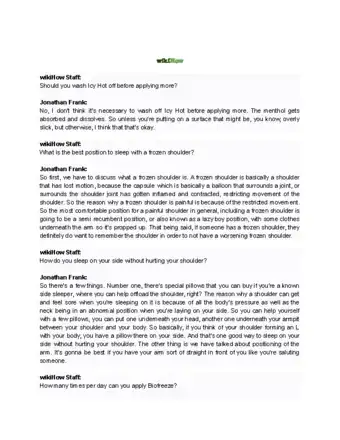
Thanks for reading our article! If you'd like to learn more about washing medical equipment, check out our in-depth interview with Jonathan Frank, MD.
References
- ↑ https://health.clevelandclinic.org/clean-medical-sports-brace-matters/#menu
- ↑ https://www.popsci.com/wash-clothes-without-wearing-out
- ↑ https://www.popsci.com/wash-clothes-without-wearing-out#page-4
- ↑ https://health.clevelandclinic.org/clean-medical-sports-brace-matters/#menu
- ↑ https://www.goodhousekeeping.com/home/cleaning/tips/a31973/mistakes-hand-washing-clothes/
- ↑ https://www.popsci.com/wash-clothes-without-wearing-out#page-4
- ↑ https://www.popsci.com/wash-clothes-without-wearing-out#page-3
- ↑ https://www.clean-organized-family-home.com/laundry-temperature.html#sthash.wl8YKOuV.dpbs
- ↑ https://www.goodhousekeeping.com/home/cleaning/tips/a22511/new-uses-for-dish-soap/
- ↑ https://www.goodhousekeeping.com/home/cleaning/tips/a31973/mistakes-hand-washing-clothes/
- ↑ https://www.goodhousekeeping.com/home/cleaning/tips/a31973/mistakes-hand-washing-clothes/
- ↑ http://volleycountry.com/training/volleyball-knee-pads-everything-you-need-to-know#how-care-your-knee-pads
- ↑ https://www.popsci.com/wash-clothes-without-wearing-out#page-4
- ↑ https://health.clevelandclinic.org/clean-medical-sports-brace-matters/#menu
- ↑ http://volleycountry.com/training/volleyball-knee-pads-everything-you-need-to-know#how-care-your-knee-pads
- ↑ http://volleycountry.com/training/volleyball-knee-pads-everything-you-need-to-know#how-care-your-knee-pads
- ↑ https://health.clevelandclinic.org/clean-medical-sports-brace-matters/#menu
